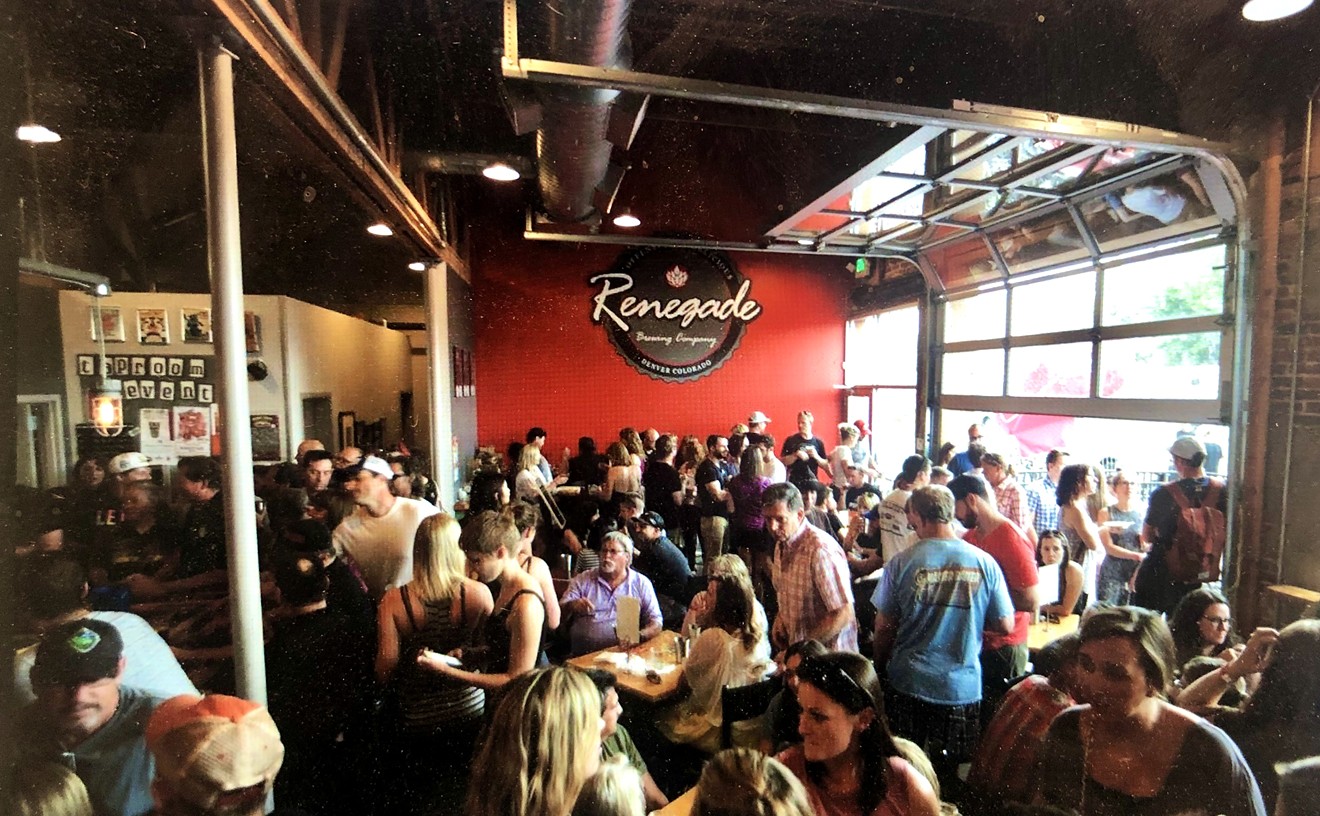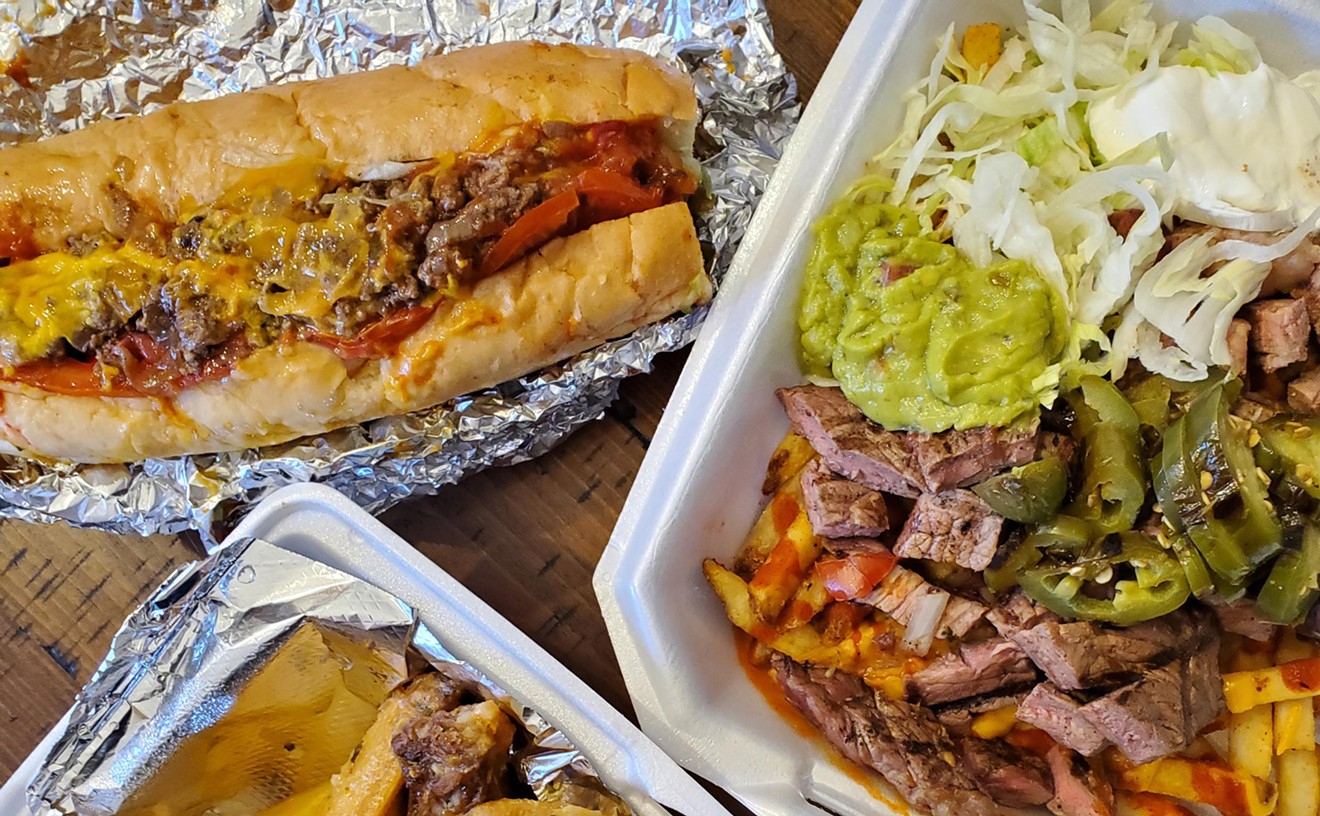On my way to Westfalen Hof, I decided to make a quick detour into Georgetown to visit a couple of my favorite, uniquely Colorado businesses.
First stop, the Georgetown Valley Candy Company, at 500 6th Street. Owners Rube and Nina Goeringer have been making and selling artisan chocolates, fudge and about a thousand other things from this cluttered, cozy space for almost ten years — but they've been supplying the good citizens of Georgetown (and others) with candy for more than thirty.
Even while whipping up a batch of his famous handmade caramel corn, Rube had no trouble talking my ear off about the history of the business, the building it's housed in and Georgetown in general. "Now, there's a limit to how much candy you can give away," he began, in fine storyteller's style. "And we had to find a way to turn Nina's hobby into a business."
He went on to offer a rough outline of how he and Nina went from a small, home-kitchen candy operation in the '70s to where they are now. How they began with candies, chocolates and clusters, and added handmade ice cream in 1987. "We just couldn't find a suitable product in the market," he explained. "Most ice cream these days is just ice milk — stretched a little, you know. We wanted something better." By then they were out of the home kitchen and in a shop just down the street, which made it easier to expand their product line. The Georgetown Valley Candy Company moved into its current location in 1999, and if you can get past all the stuffed animals for sale, the tourist knickknacks lining the shelves, and make your way to the candy counter, you'll be amazed by what they make here.
The candy cases hold a fat kid's wonderland of ever-changing specialties — from hand-painted cameos and chocolate-dipped cherries to excellent truffles and Spice Trader gourmet chocolates (spiced with chai, with ginger and cardamom, with cinnamon, chili and almonds). I'm addicted to their caramels (to the unending glee of my dentist), as well as the filled chocolates and jellies. Laura's a fan of the chocolate-covered pretzels.
Rube's talk about the town is almost as tasty as his candy. The address his business now occupies has been home to a pharmacy, a stable, an opera house and, briefly, a bank. "The banker liked the money so well, he ran off with it, though," Rube said. It's also been county offices, a plumbing shop, a rooming house for hippies and the infamous Silver Queen bar and restaurant. During World War II, copper shell casings were manufactured in the basement. The stained glass and mirrors are antiques — rescued from places like the Windsor Hotel and the Tabor Grand Opera House in Denver. Ghosts still haunt the place, Rube told me.
Maybe they're candy fans.
Just down 6th Street is Kneisel & Anderson, a grocery store that has me considering a move to Georgetown. It's the kind of grocery I've always dreamed of having right down the street — a place where, sure, I can buy a loaf of bread, a bag of Doritos and a six-pack, but where I can also pick up tinned herring, a block of Danish havarti, a bag of Olathe sweet corn, two bars of French chocolate and a package of Swedish crispbread. Kneisel & Anderson, which is now owned and operated by Cora Lou and Wendy Anderson, has been a general store forever, and still displays on its shelves some of the products — fish pastes and bone salves and hardware — that were sold here a century ago. But it also has some of the strangest, most bizarre delicacies I've ever seen in a place so small, and I've never walked across the creaking, plank-wood floors without finding something I absolutely have to have. When I stopped in a couple of weeks ago, it was a cup of instant wonton ramen soup — something I've never seen for sale in the Asian markets I haunt in Denver. A year or so ago, it was a can of crab chowder that I'd thought was only sold in North Atlantic states. It also stocks a spread of excellent European cheeses, a plethora of Colorado products, loads of English, German and Northern European specialty foods and excellent steaks.
Kneisel & Anderson is a dream destination for the serious gastronaut, a hidden treasure of freaky ethno-fusion that, in the simple act of stocking its shelves, lays plain the history of a town that was once the third-largest in all of Colorado and ground zero for the American silver boom.
Back in the kitchen: When I first encountered Olav Peterson, he was Gene Tang's executive chef at 1515, working with sous chef Ben Alandt (who went on to work with Ian Kleinman at the smart-but-doomed Indigo, at 250 Josephine Street). Peterson saw 1515 through some lean times and some flush ones, and worked like a good chef is supposed to: quietly and well, with little fanfare.
A couple of years back, though, he grew antsy for a new challenge, and so took over as chef at Euro, at 231 Milwaukee Street — another doomed restaurant address that didn't even have the Indigo advantage of being smart as well as destined to fail. But Peterson worked hard there, only to be rewarded with a pink slip when the owners decided they didn't want to pay his salary anymore. (It's since closed altogether.)
"I was doubtful after Euro," Peterson told me — doubtful about the restaurant industry in general, about whether he'd ever get back into it. "You know, it was like, what do you mean you don't want me anymore? That's fucked up."
That was more than a year ago, and after that, Peterson started flipping houses while he considered his next move. "I interviewed all over town," he said. "Something always went wrong."
Until now. Last week, Peterson called with the news that, more or less out of the blue, he'd been contacted by Alex Waters, who's opening Bistro One at 1294 South Broadway. Waters was looking for a chef; Peterson was on the verge of giving up on the business entirely. The two just hit it off. "When it comes to restaurant owners, I won the lottery on this one," Peterson said. "He's a good guy. He hasn't been in the industry long enough to learn to screw people over yet."
The new place will be an American bistro, "that classic neighborhood restaurant that I want to go out to and haven't found yet," Peterson says. "I can't even tell you how excited I am about this."
But while Bistro One is being pitched as an American bistro, there are definitely French influences. Peterson and his wife jumped the pond for Paris last fall for inspiration, and he found plenty. "Like this duck thing," he said, unloading a bunch of cook shorthand on me — about how the legs are done confit in the duck's own rendered fat, how the breasts are served in jus made from duck stock and duck pan drippings. "It's using the entire animal, man. This is the coolest project I think I've done yet."
He talked about the joy of being able to assemble his own crew (including sous Travis Lorton, snatched from Alto) and arrange his own menu of steak frites and salmon, duck and escargot. Peterson and Waters are still doing construction on the space and planning a lot of test dinners. They want to make sure they don't screw up a good thing at the last second.
When I pushed Peterson to guess at an opening date beyond the vague "early May," he just told me, "That's gonna depend..."
"On what?"
"Everything."
Leftovers: On Monday, I heard from Leigh Jones, owner of the Dish Bistro (400 East 20th Avenue, in the space formerly occupied by the Painted Bench) and Horseshoe Lounge (which is right next door). "I'm closing the Dish," she said, without preamble. "Just thought I should let you know."
When I asked her why, she gave me the usual industry flummery: reconcepting, remodeling, busy but not busy enough. Then, finally, she got down to the nut of it: an urge to simplify her life after a trip to Utah, where she'd sat by a friend who'd just suffered a heart attack. "I had a week away from the restaurant, outside the industry — a whole week to think," she told me. "And God love what Mel Master has done with his life, but I don't think I have it in me to stand in front of a restaurant all day."
Jones plans to shut down the Dish on May 4 and reopen the space by Memorial Day weekend as a kind of neighborhood bar and pool hall — with great food and high-end booze in the existing Dish bar space, and a few billiard tables, dartboards and cocktail seating in the former dining room. Though chef Carl Klein will probably move on, Jones hopes to write a new menu that fits with her current "global comfort food" theme, to keep the wine list and add a few more beers, and to "essentially make [the bar] ten times as comfortable to eat at. My regulars? That's where most of them eat, anyway."
The Horseshoe will continue operating as is; one of the reasons Jones decided not to simply sell the Dish space was so that nothing would "come in and compete with the Horseshoe," she explained. As for a name, that's up in the air — as are other details. "I'm a girl," Jones told me. "That means I get to change my mind if I want to, right?"










